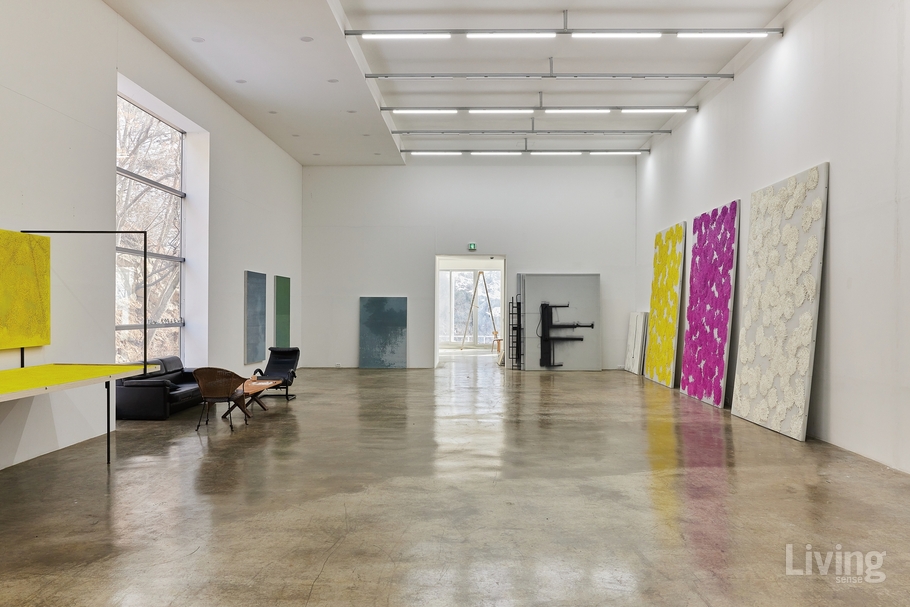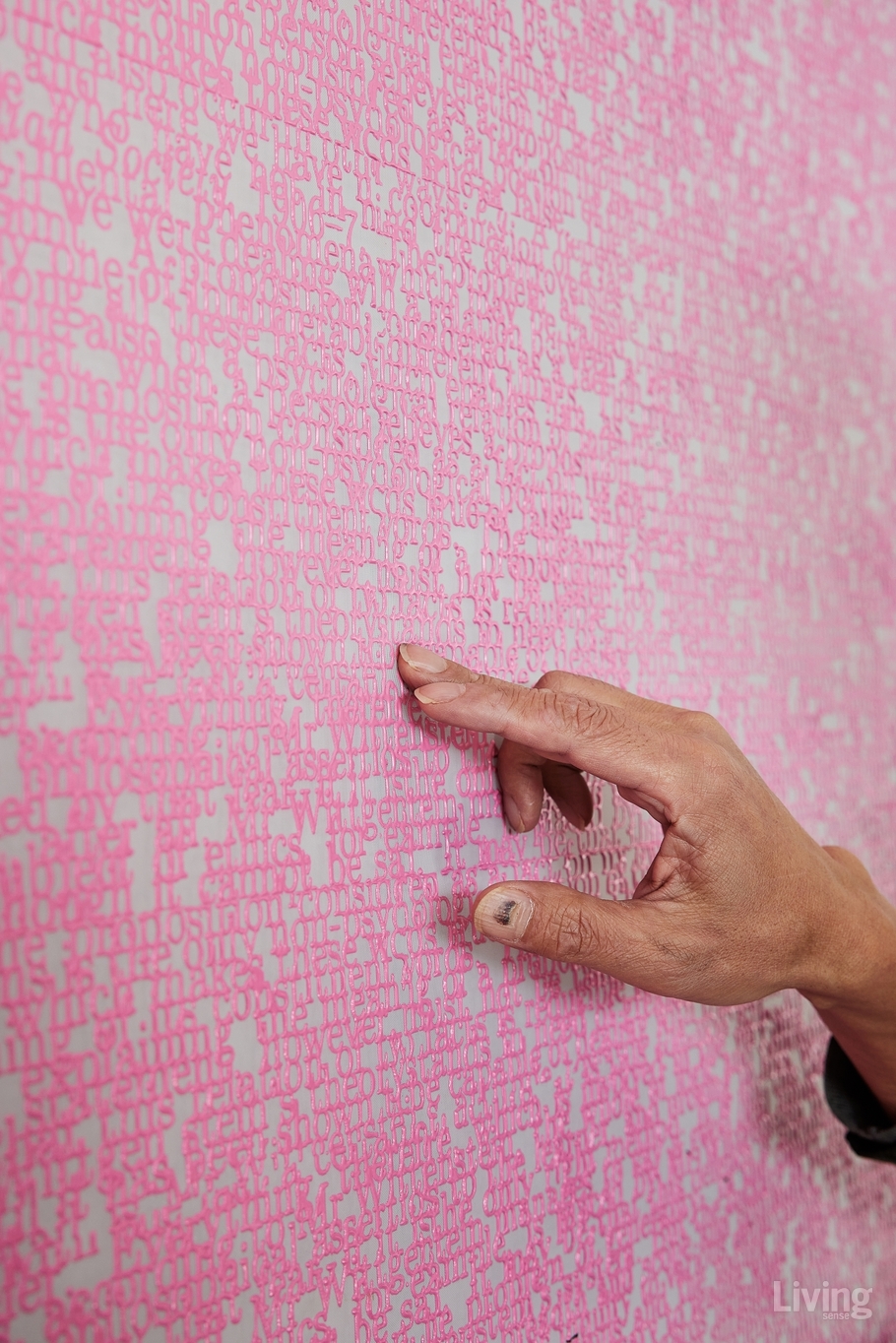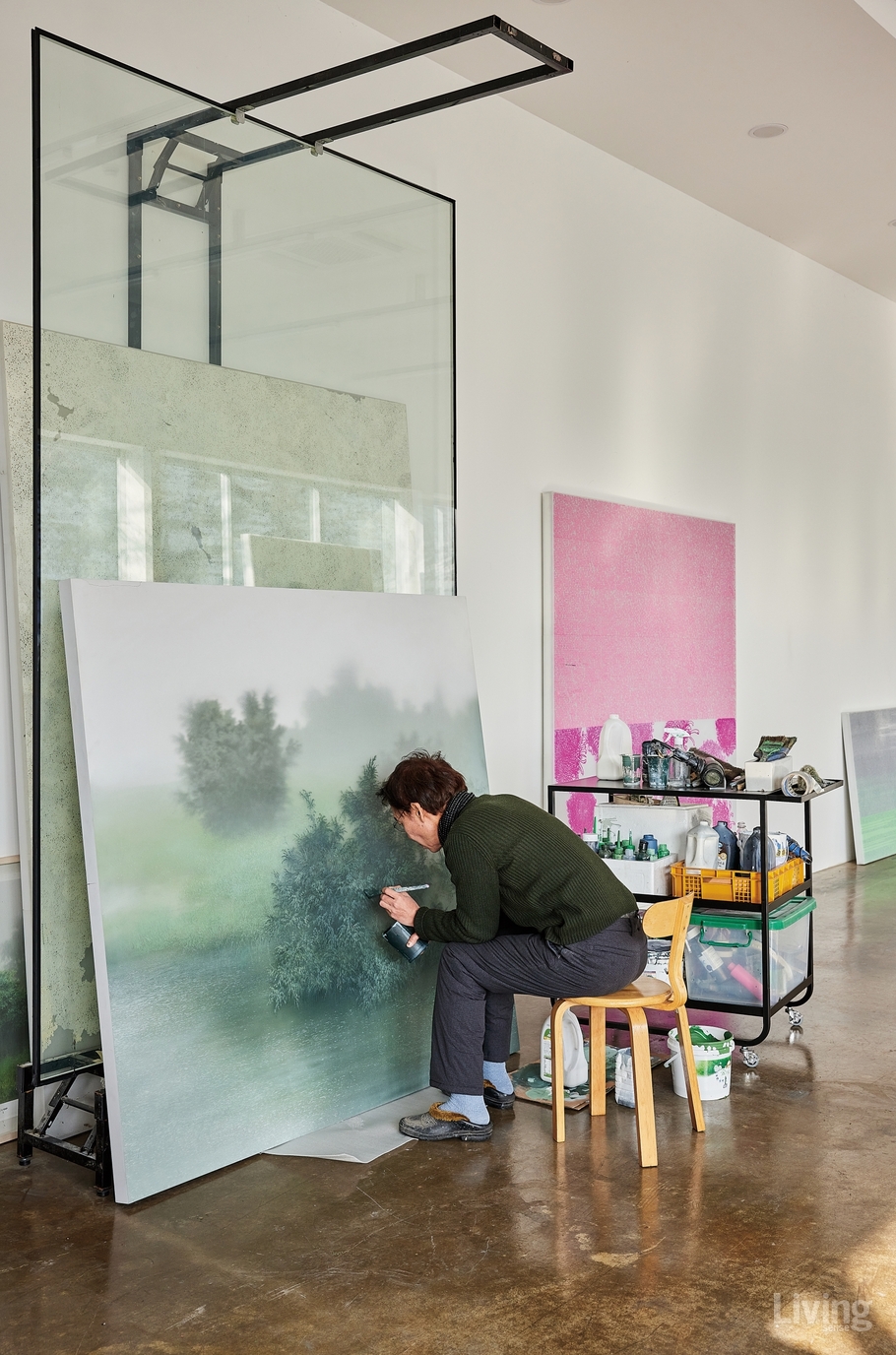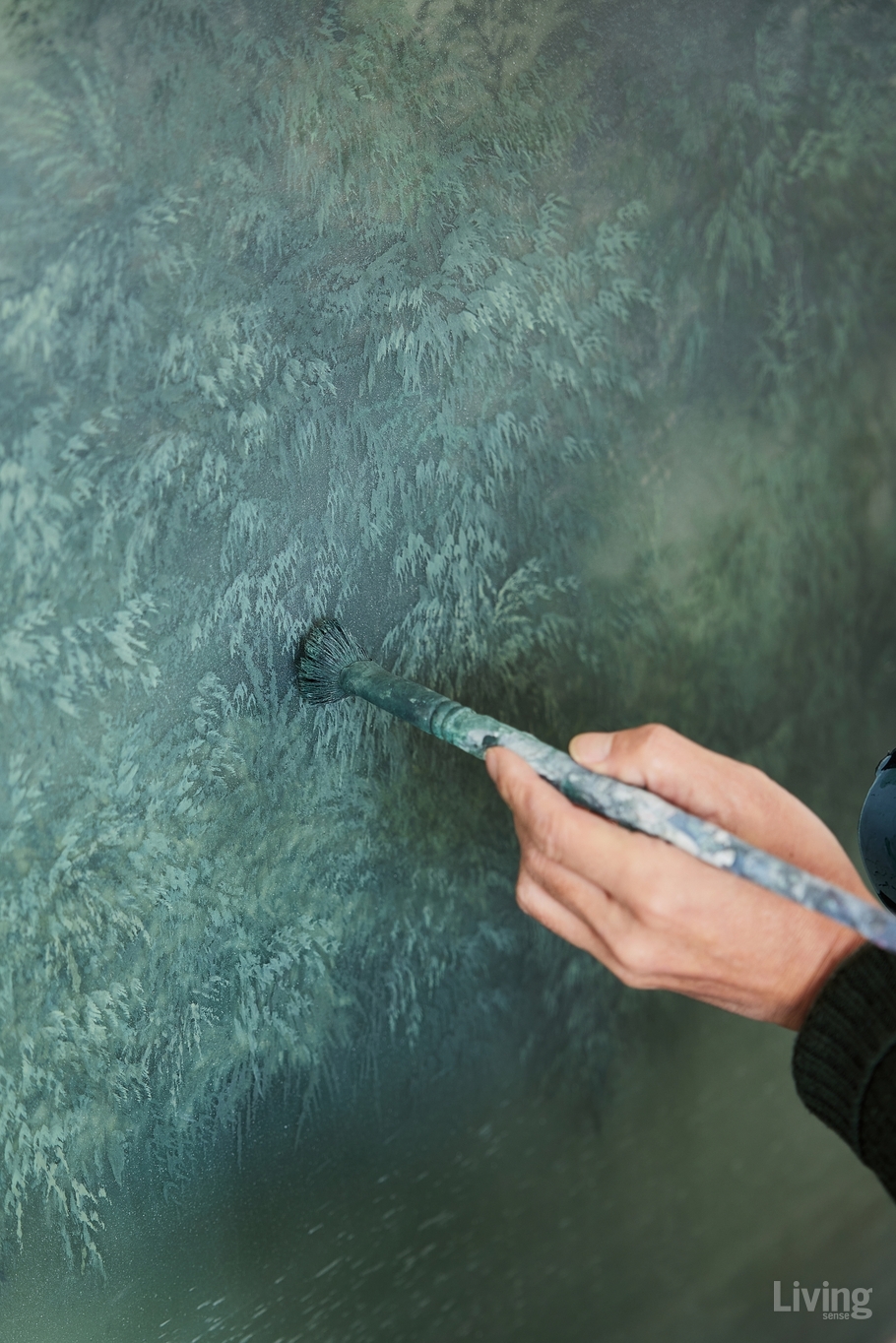Mark Tetto’s Art Space
We visited the mountain studio of Kibong Rhee, an artist who paints misty landscapes to express the essence of life. Here, the artist shares how he views and interprets the invisible world.

M: Artists are usually categorized as painters or sculptors, but your work feels closer to that of an engineer or a philosopher. You began with painting — how did this expansion of your practice come about?
R: When you begin making art, you naturally work with canvas, pencils, and paint. But as time passes, both you and the world around you inevitably change. While I was in college, I became interested in contemporary art and started encountering a variety of working methods. The dynamic energy of contemporary art, so different from painting, fascinated me. I’ve always been ambitious — whenever something seemed compelling, I had to try it. Through continuous experimentation, I’ve arrived where I am today.
M: You often depict nature in your work. What led you to that subject?
R: Since childhood, I’ve loved the paintings of Édouard Manet and Claude Monet and was deeply influenced by them. They were geniuses of perception centuries ahead of their time, so I studied their works every day. I was curious by nature — when the wind blew and the trees swayed, I would wonder how to express that movement. On weekends, I would carry my easel to the fields to paint. That said, the theme of my work is not the ecological property of nature itself.
M: Then would it be right to say that your early work stemmed from an interest in nature, but over time you’ve moved beyond the visual to explore logic, philosophy, and more essential ideas?
R: Over years of working, thoughts accumulated in my mind, and gradually, they began to turn toward what cannot be seen. Exploring the invisible world brings tremendous pleasure. There’s nothing quite as exhilarating as understanding and discovering the workings of the world. When we are young, we understand the world through what we can see, but as we grow and gain experience, we start to sense unseen systems that govern how things move. Those systems are of such a high order that humans can never fully comprehend them — but even partial understanding allows us to perceive ourselves and the world a bit more deeply.
Exploring the invisible world is an immense pleasure.

M: Do you wish to include more of these unseen elements in your work, beyond what is visible in nature?
R: Great artworks always contain both the visible and the invisible. Some capture more of what can be seen, while others minimize the visual to express the unseen. It’s difficult to pursue both at once, but in my case, I think it’s half and half. (laughs)
M: When looking at your work as a whole, several recurring themes emerge — phantom, emptiness, operation, rebirth, and layer, for instance.
R: You’ve understood my work quite well. I believe everything that is alive operates through a mechanism. For example, imagine a fan with three blades: when it spins, the blades become invisible, but the air flows. That’s a phantom. The wind itself cannot be seen, yet it exerts physical force — that’s what I call a “system in operation.” The world moves through mechanisms on a scale beyond human comprehension, and that awareness fills us with awe, leading us to contemplate the existence of the divine.
M: Your works seem to encourage viewers to approach the world with that same sense of reverence.
R: I think that feeling of awe is something only humans possess — and artists, in particular, must keep it alive. Once you’ve experienced such emotion, a certain world opens up to you. I believe that through art, both the artist and the viewer can open themselves to that world.
M: In your work, there are recurring ideas of disappearance and rebirth. Do these carry religious meanings as well?
R: I didn’t intend to address religion from the beginning. But as my work progressed, I realized that the mechanisms I perceive in the world resemble the philosophies found in religion — disappearance, resurrection, and the notion of spirit. These are all subjects that religion explores. As an artist, you often confront such boundaries. There are masters who have long studied the world and humankind — from the Buddha to Plato and Nietzsche. The walls built by such geniuses are difficult to cross.


M: If one can feel through your work what others might achieve only through long study of philosophy or religion, I think that’s equally meaningful.
R: Some insights are achieved through immense effort, while others occur suddenly and by chance. We can’t say one is superior to the other. I believe that simply having the will and desire to understand the world more deeply is enough.
M: Your practice has always been about pursuing something new.
R: I believe a desire for a beautiful world gives rise to beautiful work. Simply put, a work of art is a representation of the world. I’m drawn to beauty — and beauty doesn’t appear by accident. Its foundation lies in the system behind it, and to bring it forth requires both knowledge and physical effort. I often say that an artist must “give their flesh” to their work. Only by pouring yourself into it can a work truly be complete.
M: You continue to experiment in diverse ways — what are your current plans?
R: In the end, I think I’ll move further toward the point where desire itself operates. I plan to use my body more directly in my process. In some recent works, I’ve used a high-pressure washer to spray water as a way of completing the surface. I’m thinking about what might emerge when the body and the work meet and collide in a beautiful way.
Editor: Sim Hyojin
Photographer: Kim Deokchang
